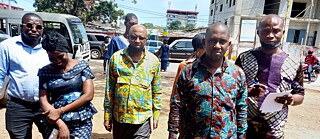„MuseumFutures Africa“
Drawing up a Map of Dreams

Study and change in the African museum landscape.
By Njoki Ngumi
Museum Futures Africa was established in early 2020, after the successful blooming of 2 years of what had been called the Museum Conversations. Over the period of the Museum Conversations, there were many ideas shared by several stakeholders about what innovations were possible within museum spaces. While in many other contexts this has given rise to a stubborn and inelastic suspicion of all things new, in this one, the carefully cultivated openness to new discourse and change bore fruit via Museum Futures Africa.
A steering committee of 6, half cultural practitioners, and half Goethe-Institut staff, guided 6 participating museums into the unknown, to dream and study together about what African museums were and could possibly become. They were assisted along the way by an extremely special dream-map: an Africology Museum Curriculum drawn up by 3 African museum experts.
These intrepid travelers spanned a diverse gamut: some came from nascent institutions barely 2 years old, while others had worked on collections from the colonial periods of the previous century. They hosted collections in everything from history to ethnography to contemporary art. This gathering of people spent over a year in localized study groups doing the important work of manifesting what had not yet been seen, asking themselves interesting questions, and supporting and advising each other in mapping out the much-needed answers.
One of their most fruitful explorations was headlined by the question “Who is our museum for?” This group was open to understanding not only who active users of their spaces had been, but who had been invisibilised and left behind. A second question raised was “what do we want to exhibit, and how?”, to which the concept of an “alive” museum emerged, defined as a “place of dialogue, noise and action”. One space of unanimous assent was about the conversations on object return and repatriation. The museum groups were intent on having discourse that humanized the process of repatriation, enabling public involvement, and having necessary difficult conversations about what community return could look like beyond museum stores.
It was beautiful to explore the pan-African urges burgeoning in the group: everyone was eager to work together more than they got the opportunity to. This collaborative network was the crown jewel of this process, demonstrating their faith in each other and in their collective willingness to keep striving together, across borders, for the changes they so desperately wanted to see in real life and real time.